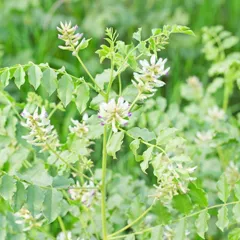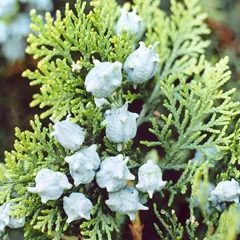Rheumatic heart disease according to Chinese Medicine
The information provided here is not a replacement for a doctor. You shouldn't use it for the purpose of self-diagnosing or self-medicating but rather so you can have a more informed discussion with a professional TCM practitioner.
Rheumatic heart disease factsheet
Possible causes and remedies:
Symptoms: Edema Sweating Urinary difficulty and one other symptom
Recommended formula: Fang Ji Huang Qi Tang
Phlegm-Fluids above the diaphragm
Symptoms: Wheezing No thirst Absence of sweating and five other symptoms
Recommended formula: Xiao Qing Long Tang
In Chinese Medicine, rheumatic heart disease can be associated with two so-called "patterns of disharmony". Chinese Medicine sees the body as a system, not a sum of isolated parts. A "pattern" is when the system's harmony is disrupted. It is not equivalent to the Western concept of "disease", as a matter of fact here rheumatic heart disease can be caused by two different patterns.
To understand whether someone's rheumatic heart disease might be caused by a given pattern, one needs to look for signs and symptoms associated with the pattern beyond what one might typically experience from rheumatic heart disease alone. For instance when rheumatic heart disease is caused by the pattern Wind-Damp, patients also experience symptoms such as sweating, general sensation of heaviness, edema and urinary difficulty. Similarly, patients with Wind-Damp typically exhibit floating (Fu) pulses as well as a pale tongue with thick white coating.
We've listed below a description of the two patterns associated with rheumatic heart disease so that you can start to get an understanding of the various possibilities according to Chinese Medicine.
Once identified, patterns are often treated using herbal formulas. Drinking herbal infusions is the most common remedy in Chinese Medicine, together with acupuncture. Here we detail below four formulas that can help treat the various patterns associated with rheumatic heart disease, depending on which pattern fits your profile.
The two "patterns of disharmony" associated with rheumatic heart disease
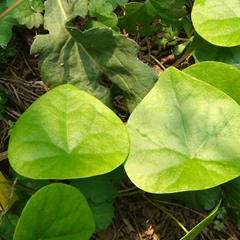
Stephania Roots (Fang Ji) is the key herb for Fang Ji Huang Qi Tang, a formula used for Wind-Damp
Wind-Damp
Pulse type(s): Floating (Fu)
Tongue coating: Thick white coating
Tongue color: Pale
Recommended herbal formula: Fang Ji Huang Qi Tang
Symptoms: Edema Sweating Urinary difficulty General sensation of heaviness
Rheumatic heart disease might be due to Wind-Damp if the condition is paired with typical pattern symptoms such as sweating, general sensation of heaviness, edema and urinary difficulty. Similarly, patients with Wind-Damp typically exhibit floating (Fu) pulses as well as a pale tongue with thick white coating.
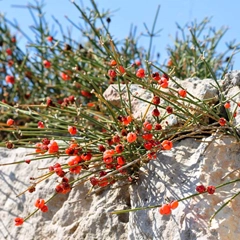
Ephedra (Ma Huang) is the key herb for Xiao Qing Long Tang, a formula used for Phlegm-Fluids above the diaphragm
Phlegm-Fluids above the diaphragm
Pulse type(s): Floating (Fu), Tight (Jin)
Tongue coating: Thick white coating
Tongue shape: Swollen
Recommended herbal formula: Xiao Qing Long Tang
Symptoms: Wheezing No thirst Absence of sweating Generalized body pain Alternating fever and chills General sensation of heaviness Stifling sensation in the chest Coughing of copious thin and white sputum
Rheumatic heart disease might be due to Phlegm-Fluids above the diaphragm if the condition is paired with typical pattern symptoms such as alternating fever and chills, absence of sweating, wheezing and stifling sensation in the chest. Similarly, patients with Phlegm-Fluids above the diaphragm typically exhibit floating (Fu) or tight (Jin) pulses as well as a tongue with thick white coating.
The four herbal formulas that might help with rheumatic heart disease



The top herbs in Fang Ji Huang Qi Tang are Stephania Roots (Fang Ji), Milkvetch Roots (Huang Qi) and Atractylodes Rhizomes (Bai Zhu)
Fang Ji Huang Qi Tang
Source date: 220 AD
Number of ingredients: 6 herbs
Key actions: Diuretic, clears Excess fluid and removes edema. Tonifies the Spleen Qi. Calms External Wind.
Why might Fang Ji Huang Qi Tang help with rheumatic heart disease?
Because it is a formula often recommended to help treat Wind-Damp, a pattern sometimes associated with rheumatic heart disease. If it looks like you might suffer from Wind-Damp, this formula might help (although please seek confirmation with a professional practitioner beforehand).

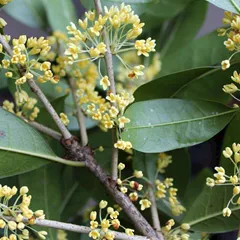
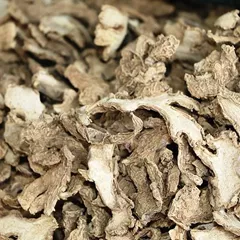
The top herbs in Xiao Qing Long Tang are Ephedra (Ma Huang), Cinnamon Twigs (Gui Zhi) and Dried Ginger (Gan Jiang)
Xiao Qing Long Tang
Source date: 220 AD
Number of ingredients: 8 herbs
Key actions: Releases the Exterior. Transforms Phlegm-Fluids. Warms the Lungs. Directs Rebellious Qi downward.
Why might Xiao Qing Long Tang help with rheumatic heart disease?
Because it is a formula often recommended to help treat Phlegm-Fluids above the diaphragm, a pattern sometimes associated with rheumatic heart disease. If it looks like you might suffer from Phlegm-Fluids above the diaphragm, this formula might help (although please seek confirmation with a professional practitioner beforehand).
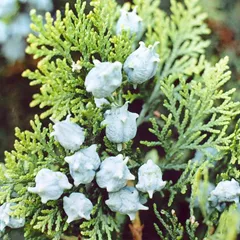


The top herbs in Bai Zi Yang Xin Tang 1 are Biota Seeds (Bai Zi Ren), Milkvetch Roots (Huang Qi) and Dwarf Lilyturf Roots (Mai Dong)
Bai Zi Yang Xin Tang 1
Source date: 16th century
Number of ingredients: 12 herbs
Key actions: Tonifies the Heart Qi . Calms the Mind and clear anxiety . Nourish the Heart Blood .
Why might Bai Zi Yang Xin Tang 1 help with rheumatic heart disease?
Because it is a formula often recommended to help treat , a pattern sometimes associated with rheumatic heart disease. If it looks like you might suffer from , this formula might help (although please seek confirmation with a professional practitioner beforehand).
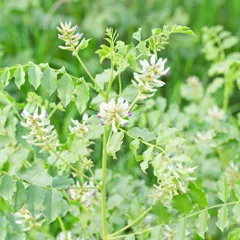


The top herbs in Zhi Gan Cao Tang are Liquorice (Gan Cao), Unprepared Rehmannia (Di Huang) and Ginseng (Ren Shen)
Zhi Gan Cao Tang
Source date: 220 AD
Number of ingredients: 10 herbs
Key actions: Augments the Qi. Nourishes Yin. Nourishes the Blood. Restores the pulse.
Why might Zhi Gan Cao Tang help with rheumatic heart disease?
Because it is a formula often recommended to help treat , a pattern sometimes associated with rheumatic heart disease. If it looks like you might suffer from , this formula might help (although please seek confirmation with a professional practitioner beforehand).
Symptoms related to rheumatic heart disease
General sensation of heaviness Sweating Edema Urinary difficulty Alternating fever and chills Absence of sweating Wheezing Stifling sensation in the chest Generalized body pain No thirst

